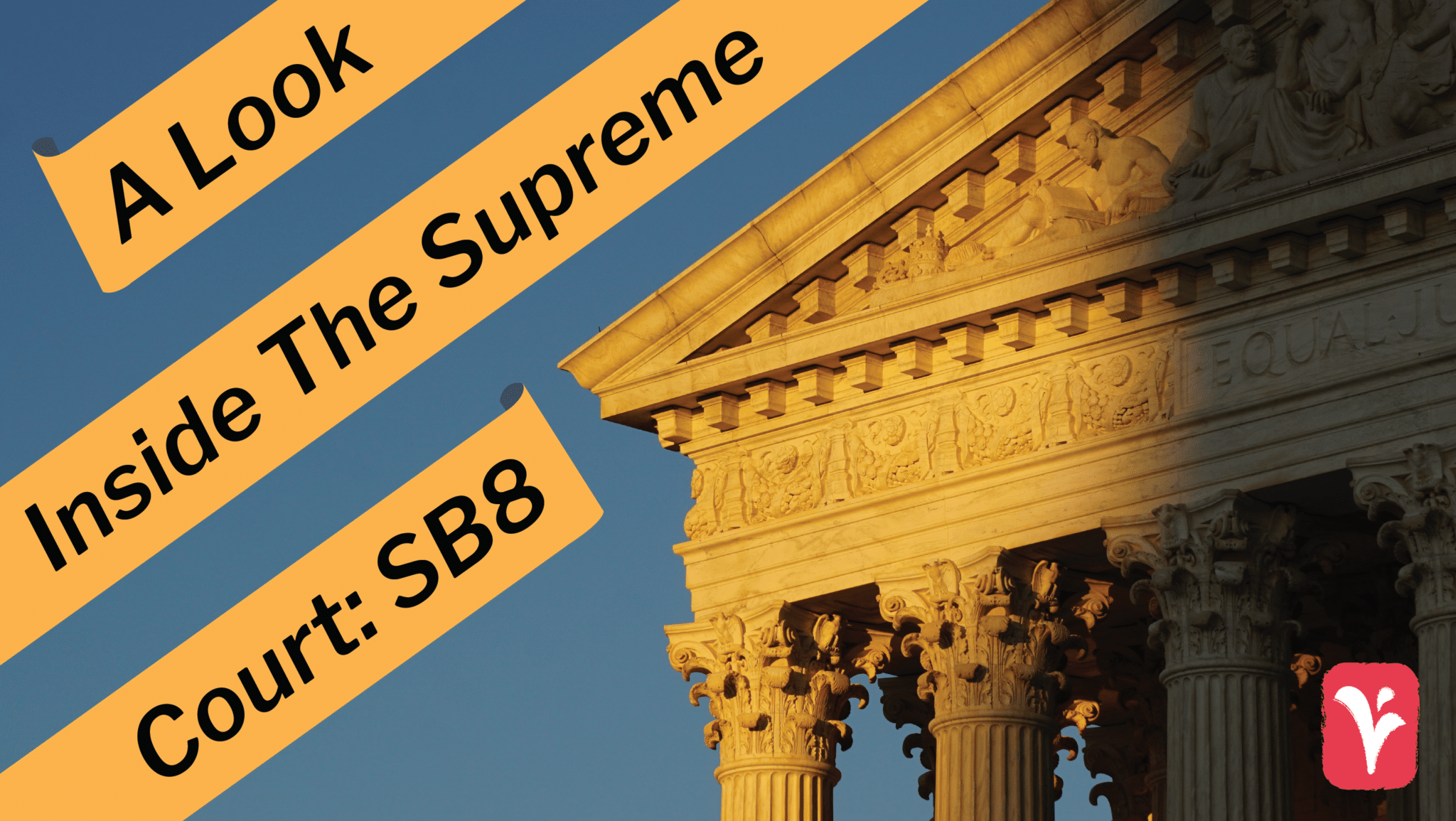On Monday, November 1, 2021, the Supreme Court heard two challenges to SB 8, a restrictive abortion law that bans abortion in Texas after six weeks of pregnancy. The arguments expanded across three hours, involving arguments from Judd Stone, Texas’ solicitor general, Marc Hearron, an attorney from the Center for Reproductive Rights, and Elizabeth Prelogar, the federal solicitor general. Here we break down what’s currently happening inside the walls of the courts and how these arguments might impact the future of reproductive health in the U.S.
Back in October 2021, SB 8 was blocked temporarily by Judge Robert Pitman. The Department of Justice argued that the law violated the Constitution, that the United States has authority to step in and intervene, and that the Texas law was designed to prohibit review by people whose rights are being violated.
On November 1, 2021, two main arguments were in question and encompassed whether a federal court could review a law that delegates to citizens the right to enforce civil actions, and whether the U.S. could sue a state in federal court.
Hearron, representing abortion providers, argued that the law was unconstitutional and barred people from exercising their rights. He advocated for an injunction against Texas state court clerks so that it would prevent them from accepting lawsuits against abortion providers who have aided and abetted people seeking abortion.
What’s more, SB 8 raises issues about enforcement. The law allows citizens to act as gatekeepers by providing a $10,000 award for suing people who receive an abortion. However, this aspect of the law has caused confusion about what entity would enforce it.
On the other side, Stone stated that it would be unconstitutional for the federal government to intervene and prohibit the state from taking action. In Stone’s argument, he referred to a 1908 case called Ex parte Young, a case that ruled that state officials could be sued in federal court for blocking the enforcement of state laws.
In response to Stone, Prelogar argued that Ex parte young was not relevant to the current case because the law was written to undermine federal law and the judicial review process.
Each justice had their own opinions on the arguments brought forth. Justice Elena Kagan disagreed with Stone’s premise that the U.S. was overstepping the boundaries. She argued that in this scenario if SB 8 were allowed to continue, it would set a precedent that states could challenge federal laws and amend them however they saw fit.
Kagan said that SB 8 did all but end abortion in Texas. “The provisions in this law have prevented every woman in Texas from exercising a constitutional right, as declared by this court,” she explained. “That’s not a hypothetical. That’s an actual.”
When the Supreme Court refused to block SB 8, four justices issued dissents, including Justice Sonia Sotomayor, the third woman in history to hold the position. She said that because the Court refuses to act immediately to protect women seeking an abortion, there will be dire consequences. “The promise of future adjudication offers cold comfort, however, for Texas women seeking abortion care, who are entitled to relief now. These women will suffer personal harm from delaying their medical care, and as their pregnancies progress, they may even be unable to obtain abortion care altogether,” she wrote.
As noted by Sotomayor, the Supreme Court refused to look at SB 8 in prior months, catalyzing her dissent. “Women seeking abortion care in Texas are entitled to relief from this court now. Because of the Court’s failure to act today, the relief if it comes, will be too late for many. Once again, I dissent,” Justice Sotomayor wrote.
Joining Sotomayor in the dissents are Chief Justice John Roberts and Elena Kagan, who criticized the rushed nature of determining SB 8’s future. Rushing a decision without oral arguments or full briefing is called a “shadow docket.” “Today’s ruling illustrates just how far the court’s shadow-docket decisions may depart from the usual principles of appellate process. That ruling, as everyone must agree, is of great consequence,” Kagan wrote.
As a result of SB 8, Sotomayor notes that 95% of abortions are now prohibited, which will force clinics to close their doors, leaving regions in Texas without abortion access or access to general health care. Before 2013, Texas had forty operating abortion clinics. Now, the number of clinics is down to twenty-three, underscoring the point that abortion restrictions reduce access. As a result, women are traveling out of state as far as Oklahoma and Kansas to access abortion services. Low-income women and women of color are most impacted, as they are statistically less likely to be able to afford travel or caregiving costs associated with out-of-state abortions.
With the complexity of the law, it could take time for the courts to reach a decision. It’s unclear what is next for SB 8, but for now the law remains in effect.
